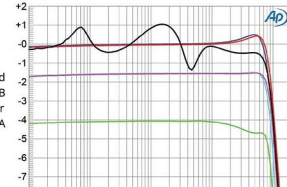MEASUREMENTS
I used DRA Labs’ MLSSA system and a calibrated DPA 4006 microphone to measure the Polk Legend L100’s frequency response in the farfield, and an Earthworks QTC-40 mike for the nearfield responses.
Polk specifies the L100’s sensitivity as 85.5dB/2.83V/m; my estimate was actually a little higher, at 87dB(B)/2.83V/m. The L100’s impedance is specified in the manual as 4 ohms, with a minimum magnitude of 3 ohms, though on Polk’s website it is specified as 3–4 ohms. The solid trace in fig.1 shows that the impedance magnitude remains above 4 ohms from the paper by Eric Benjamin to calculate the “equivalent peak dissipation resistance” (EPDR).1 The L100 has minimum EPDRs of 1.73 ohms between 127Hz and 140Hz and 1.25 ohms between 3.3kHz and 3.6kHz. This loudspeaker will work best with amplifiers that are comfortable driving loads below 4 ohms. This is probably why KM found that the Polk speakers proved a better match with some amplifiers than others.
You’re reading a preview, subscribe to read more.
Start your free 30 days



